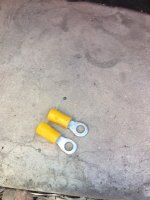I woke up a couple of times during the night and checked the pump - still running as per freeze program I set @1200prmThe pump ran all night and shut off shortly after the sun got onto the equipment pad. I have no idea why it takes a while to start, the temp adjustment doesn't appear to make a difference, but it did work. It isn't terribly important for me as I intend to run my pump 24/7, though at a very low rpm for most of the day. Hopefully this info is useful to others.
I left mine set to schedule not manual overnight and was woken up 8am with the cleaning speed@ 3000rpm which I had set to speed 3 running. I looked and display showing 3000rpm PLUS the snowflake so after some thought, it seems that if it has both the schedule and freeze active the freeze takes priority unless the schedule rpm exceeds the freeze rpm setting then it goes to that speed which is cool (no pun intended!) then it reverts back to freeze rpm after it isnt higher (obviously as long as the temp is low enough to activate the freeze program).
I will recheck this theory by making a new schedule with 10s in the rpm (1010,3010,2010 etc) so its obvious that its the schedule running not the freeze program but the logic seems sound and I'm impressed
Leaving the start/stop button "off" tonight and have the freeze set to 45F and will check that it comes on when pump set to stop so we know





